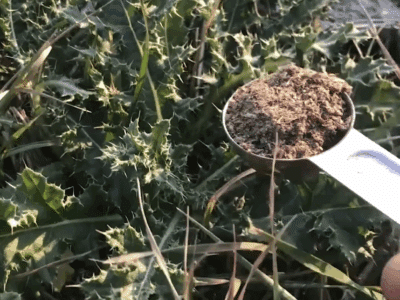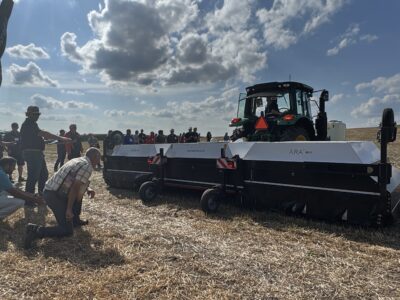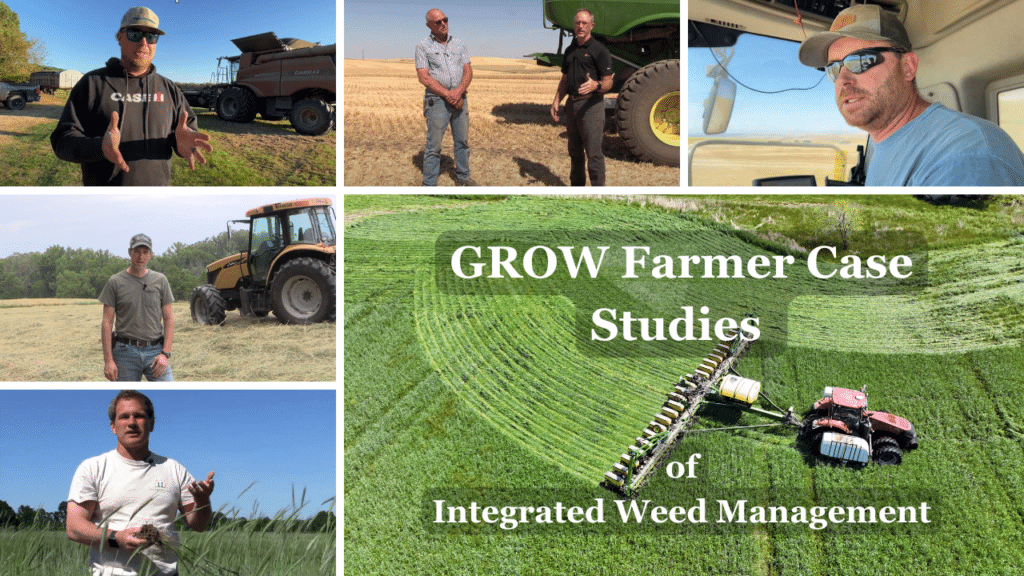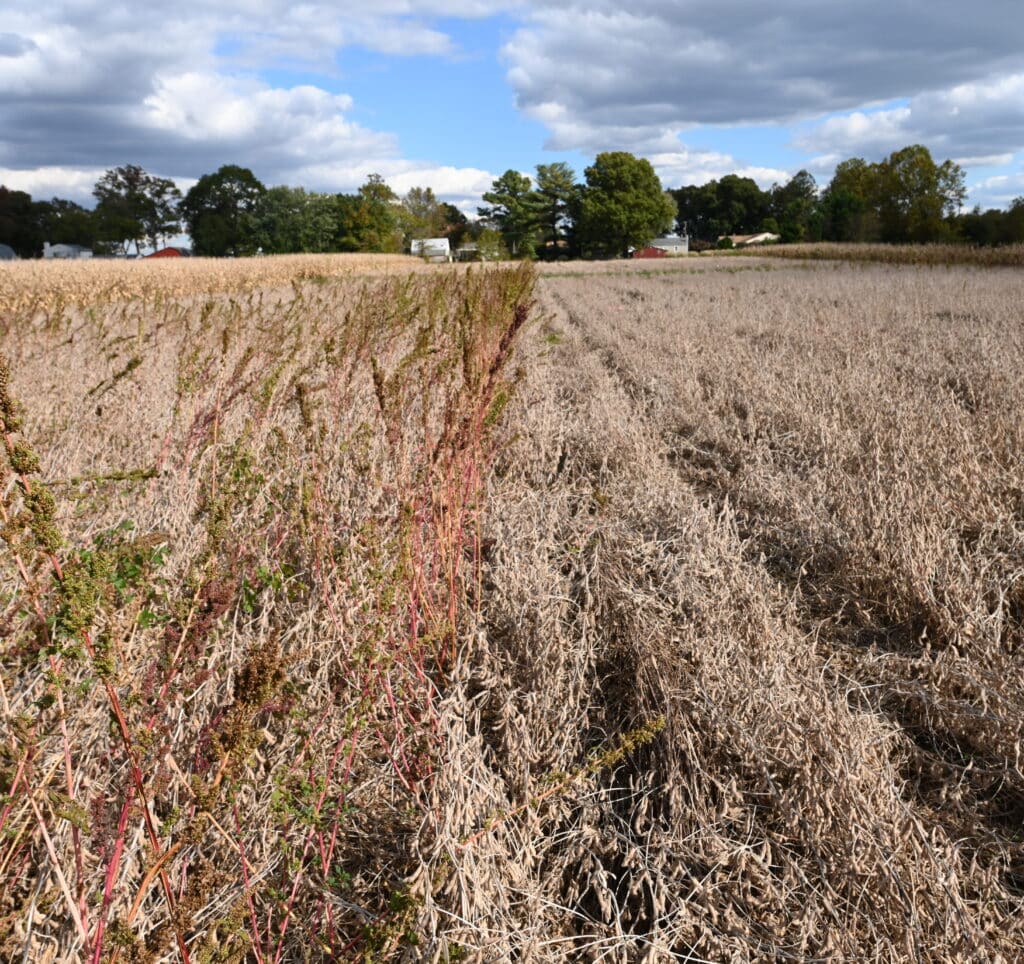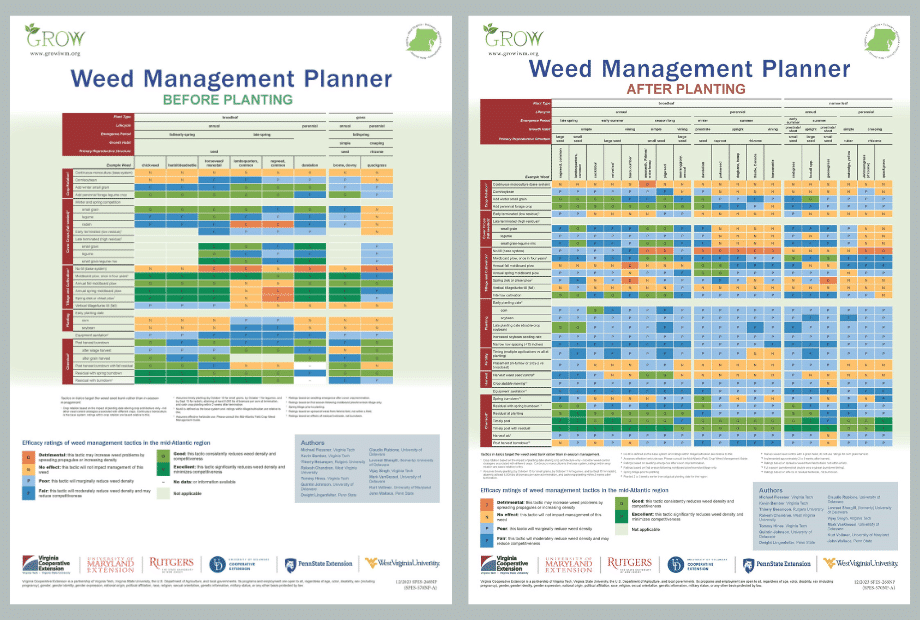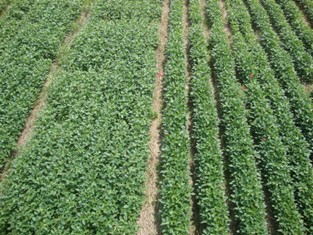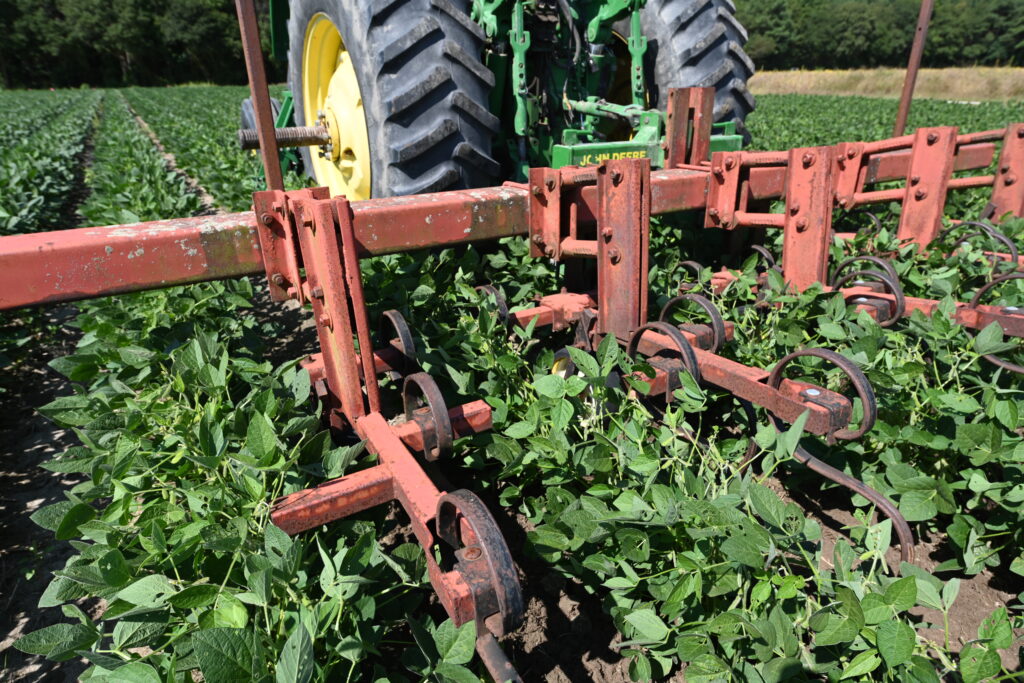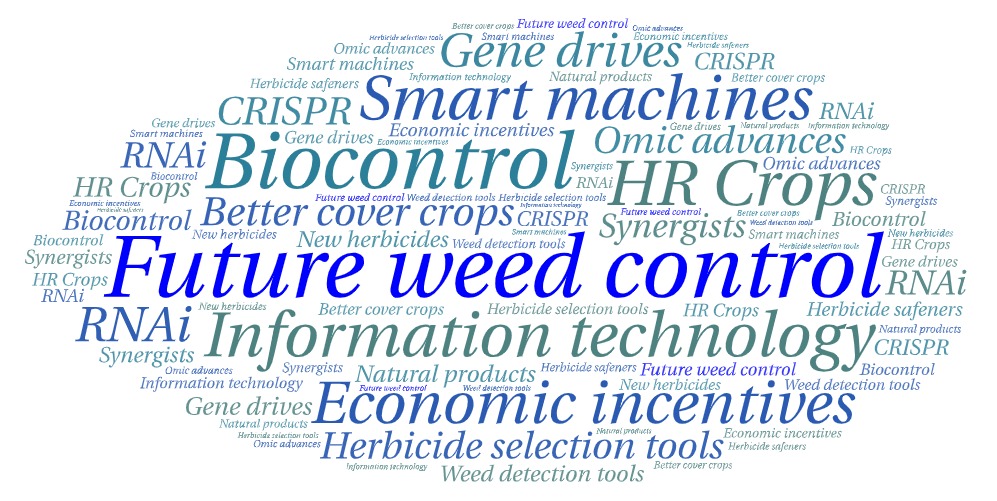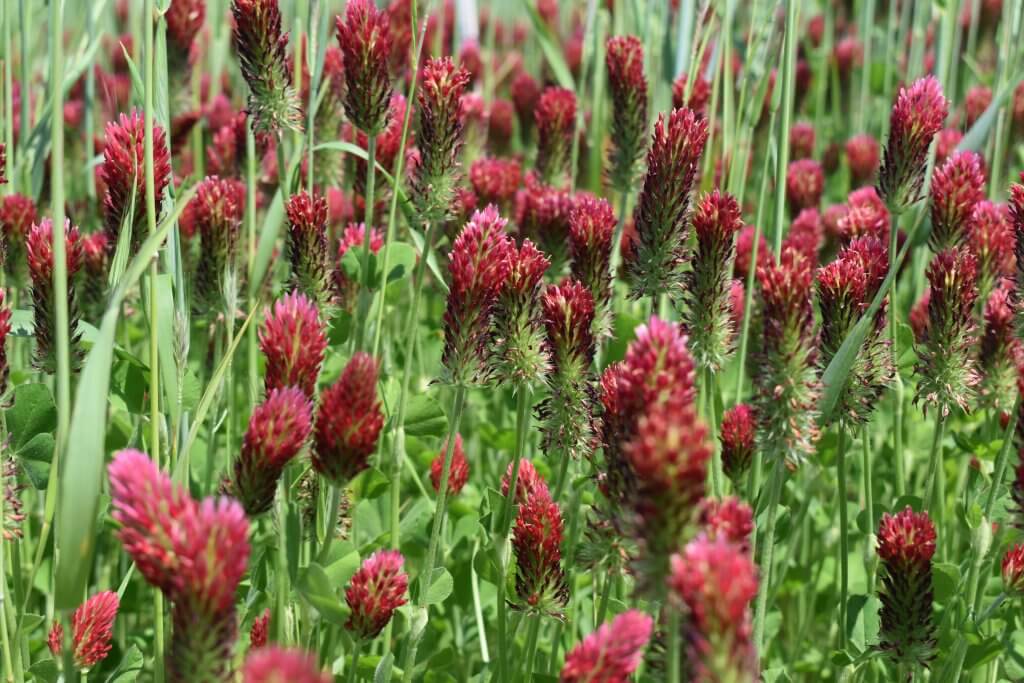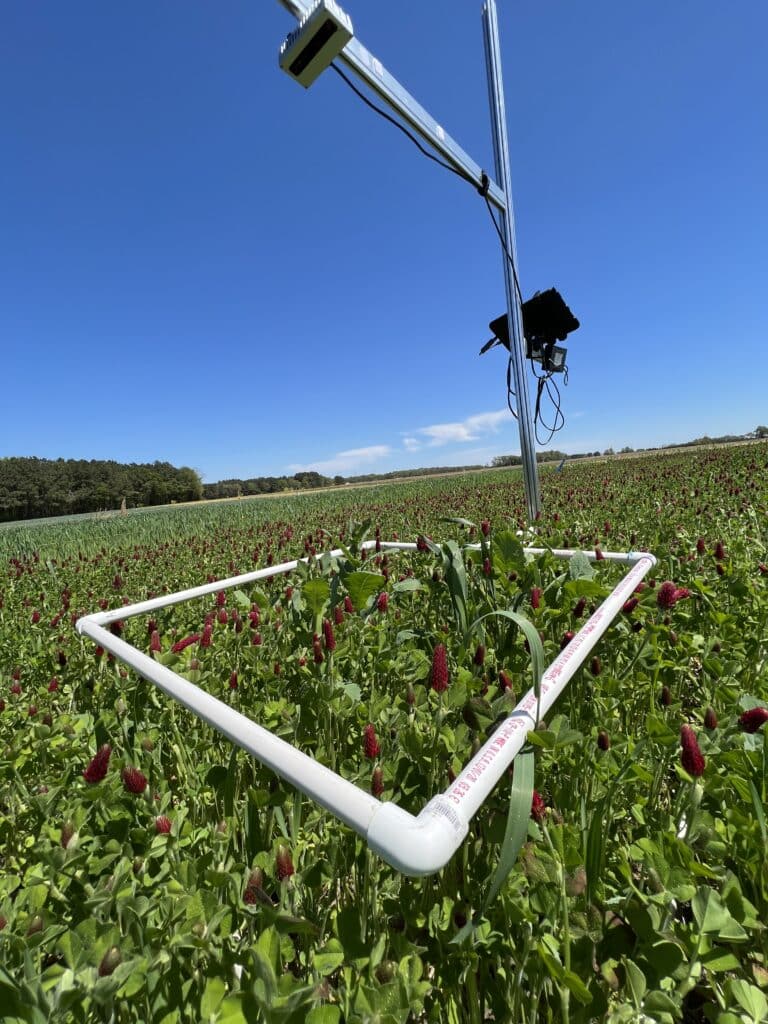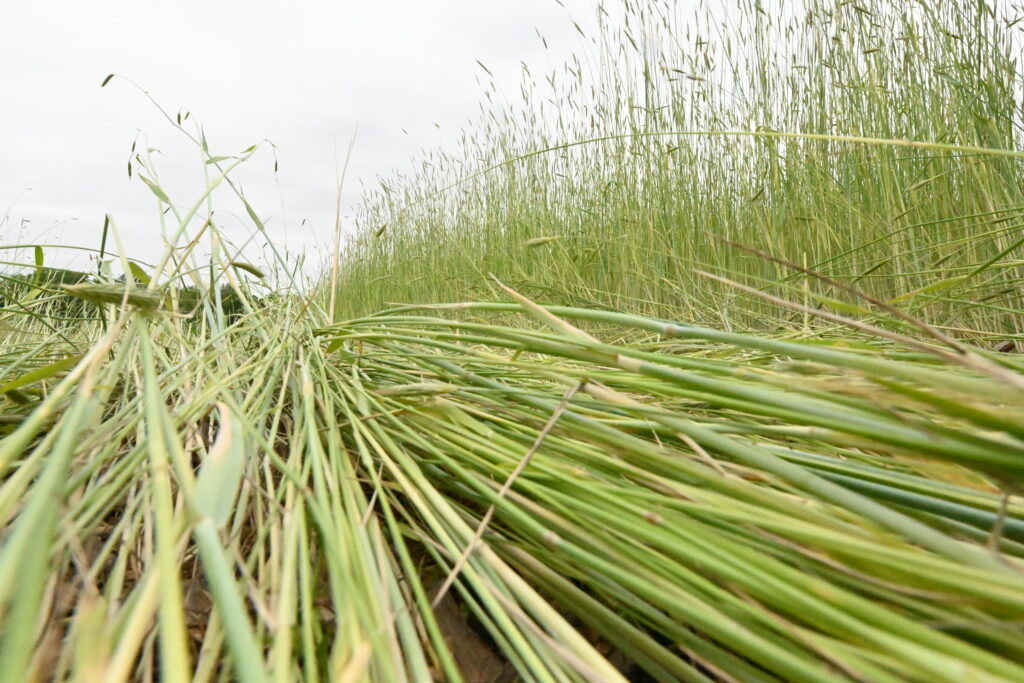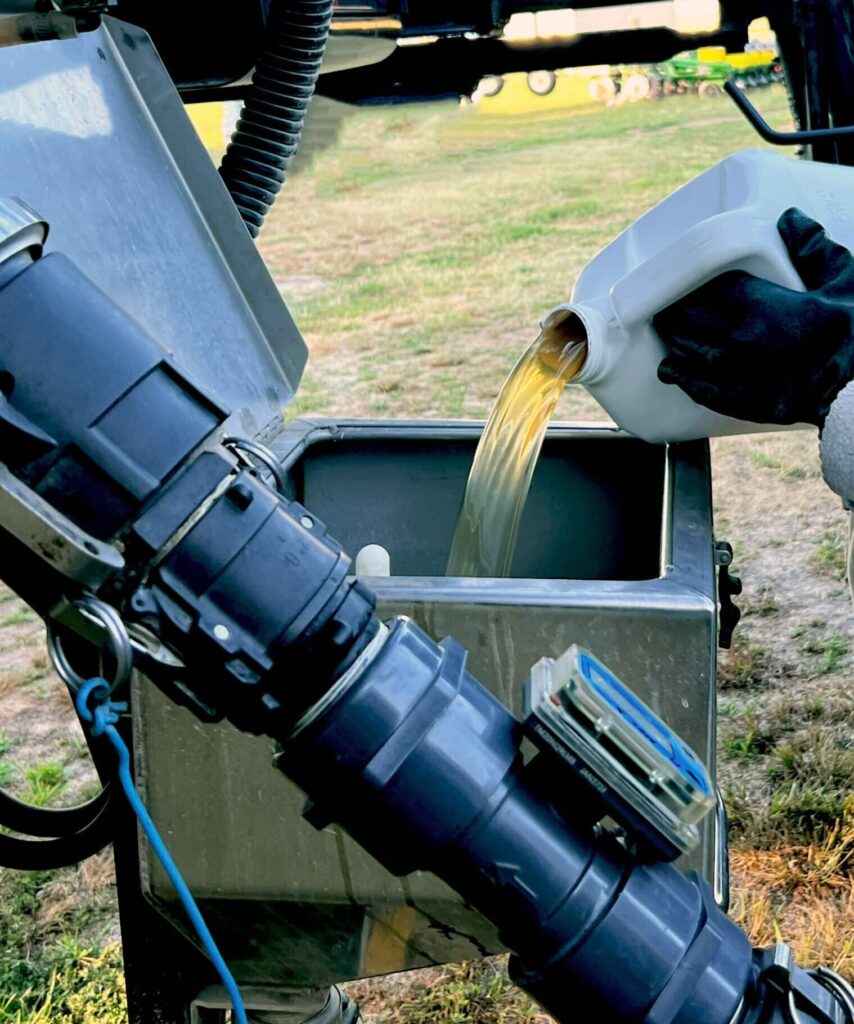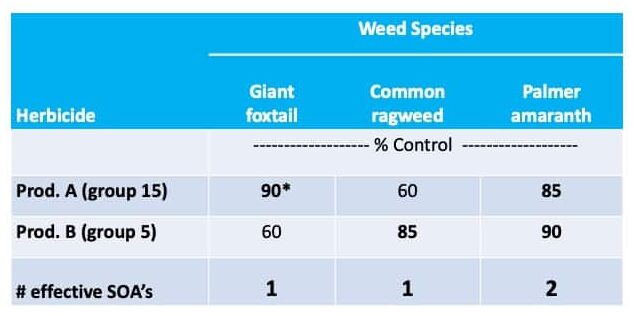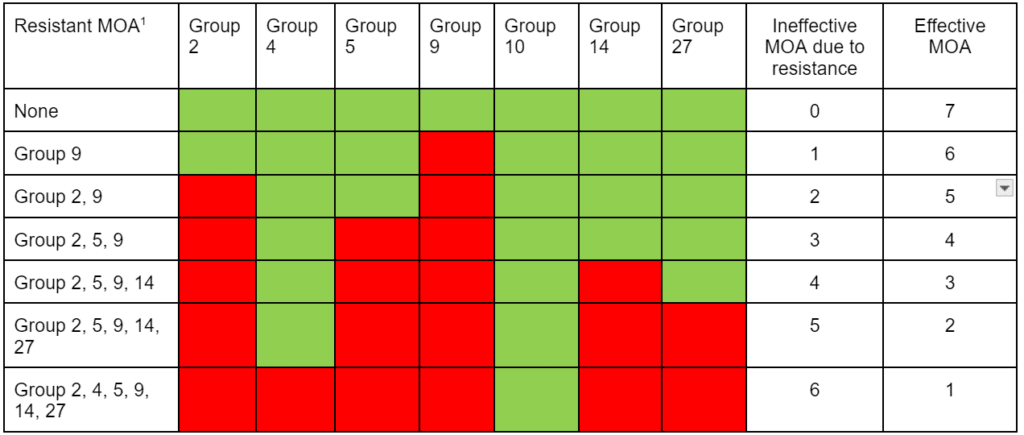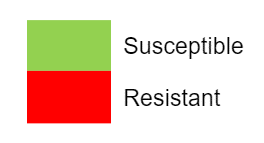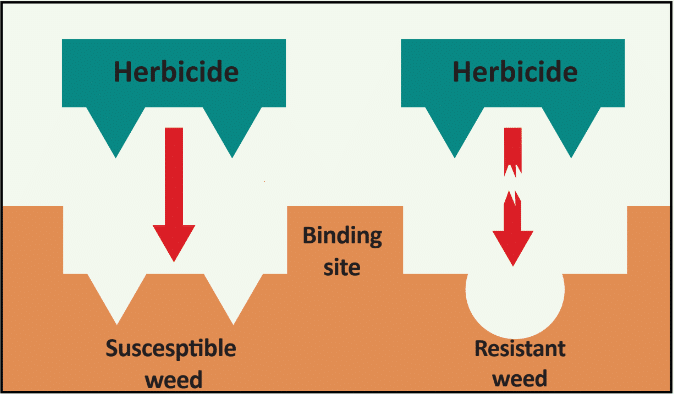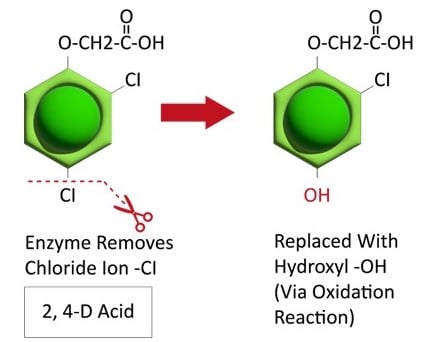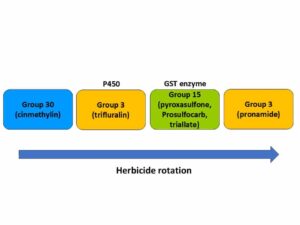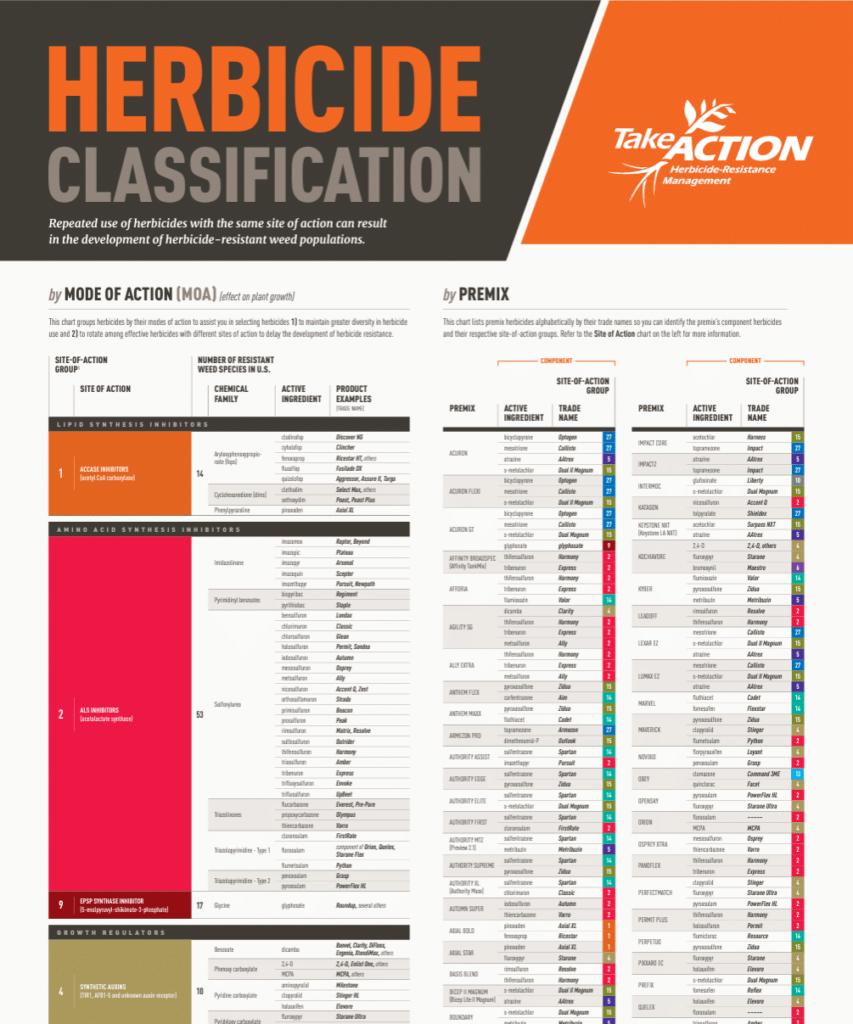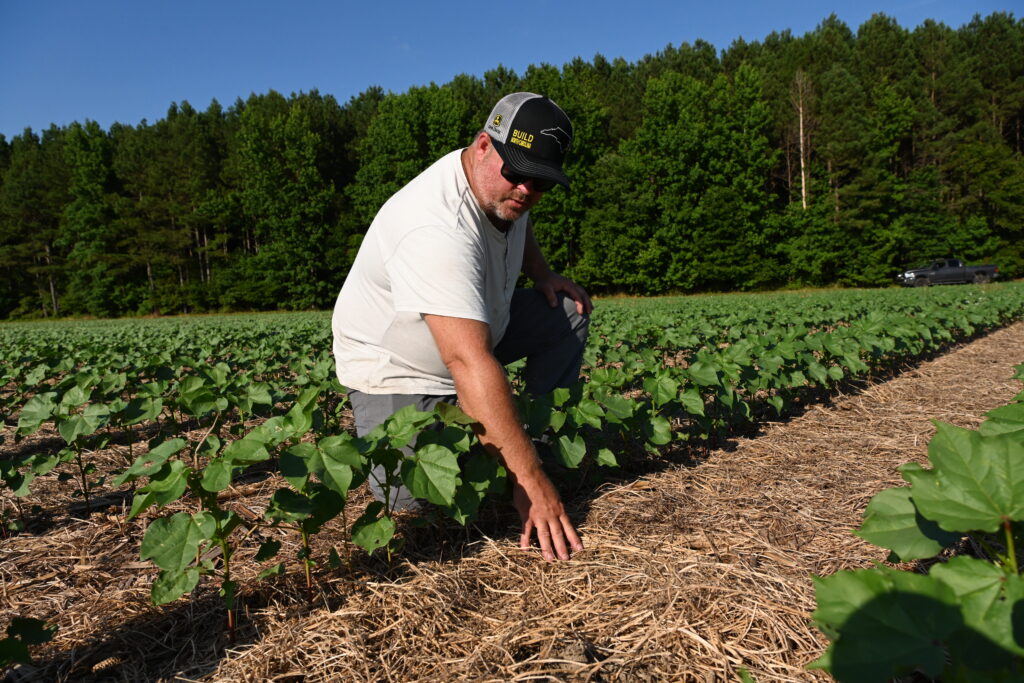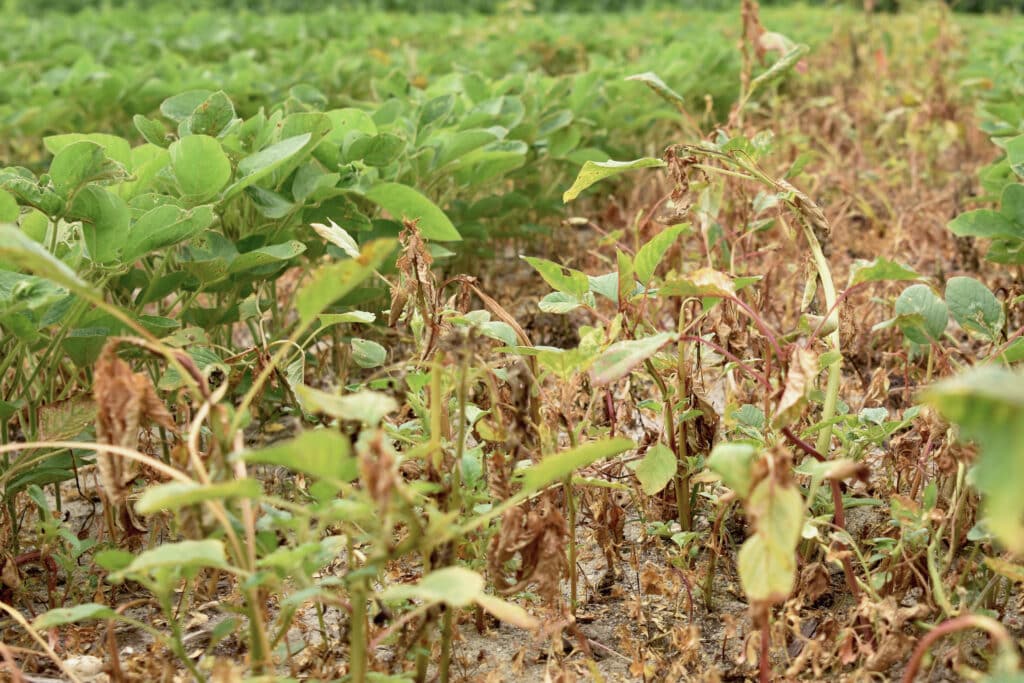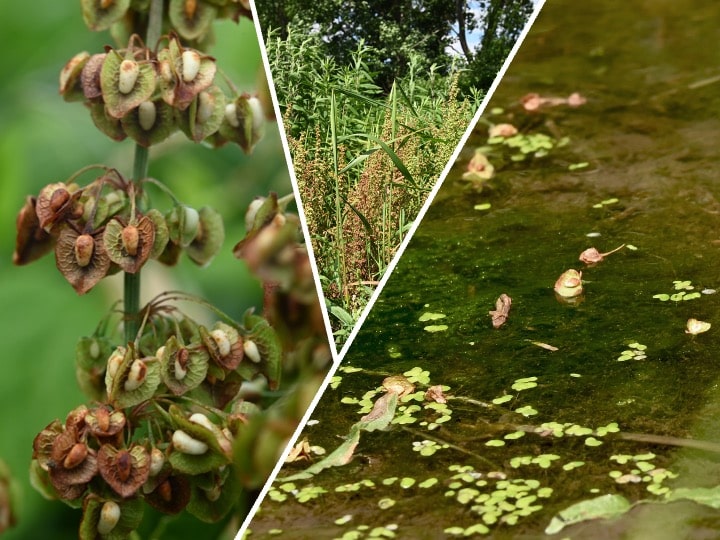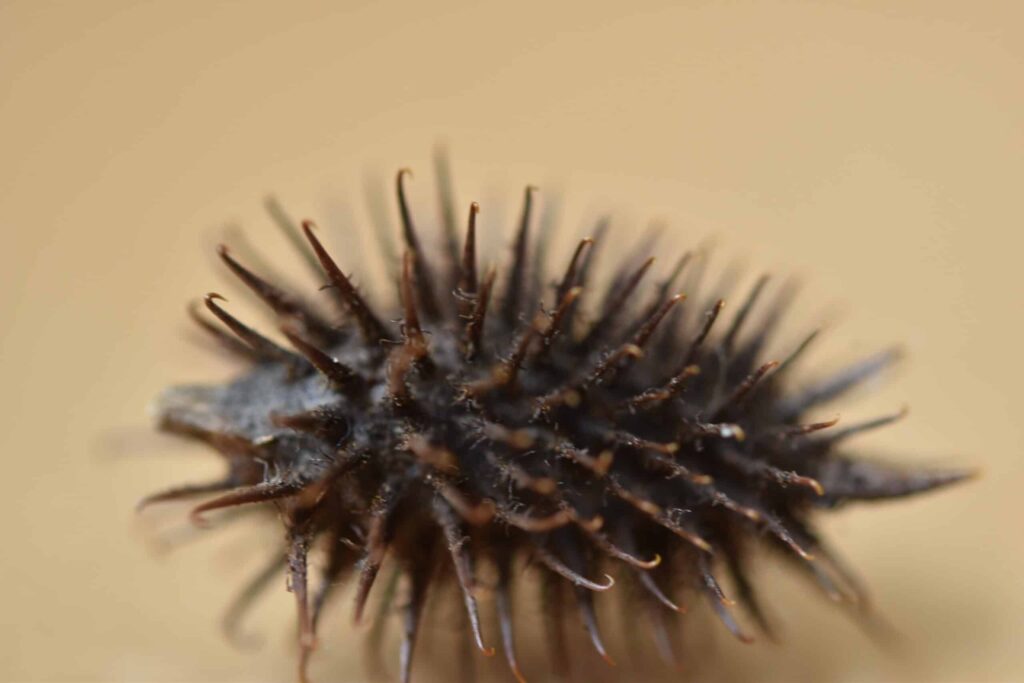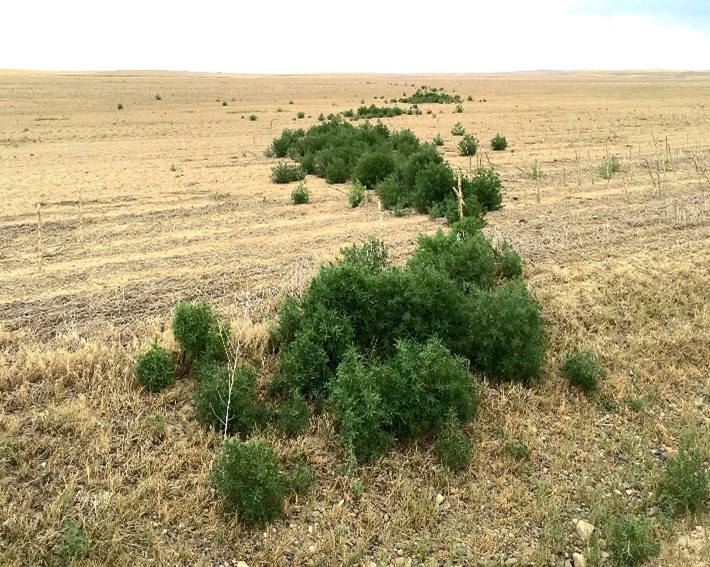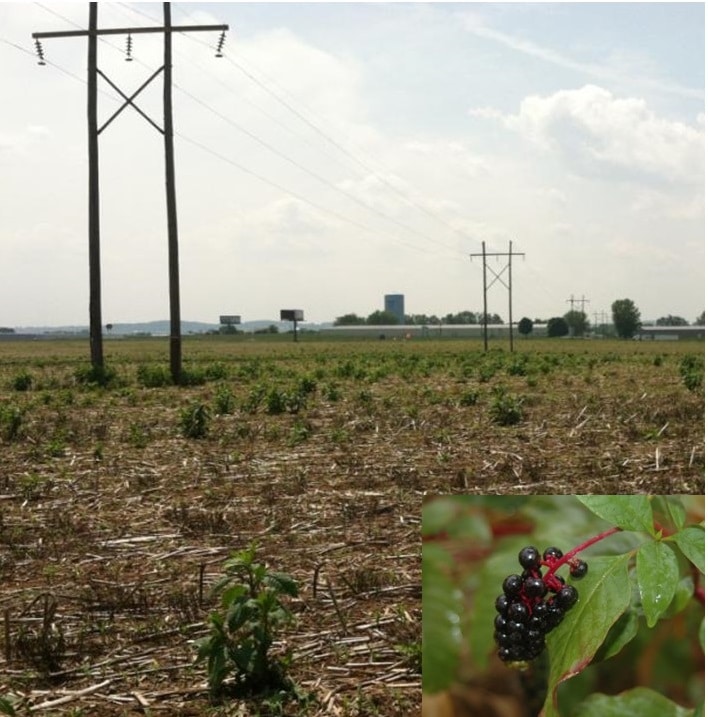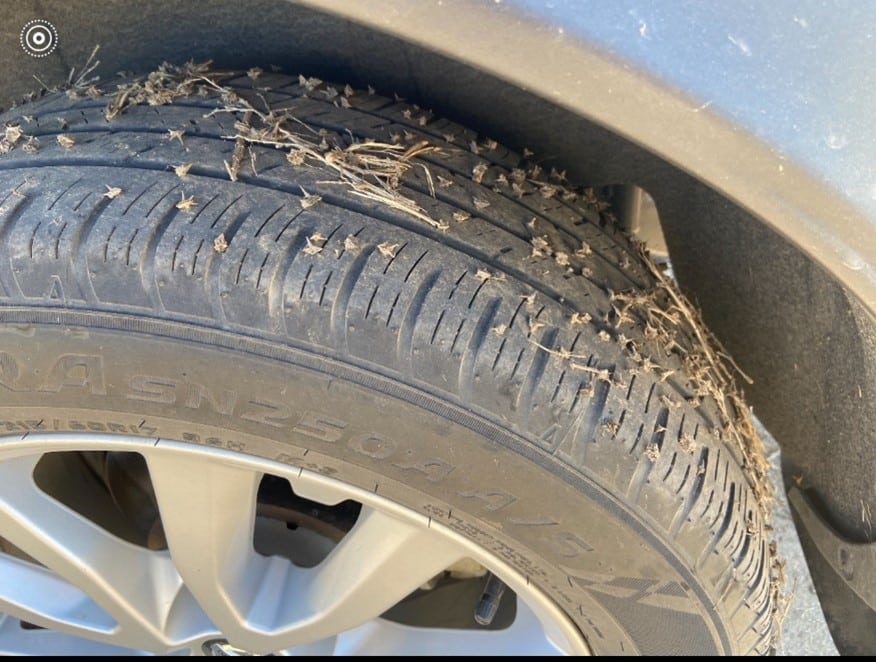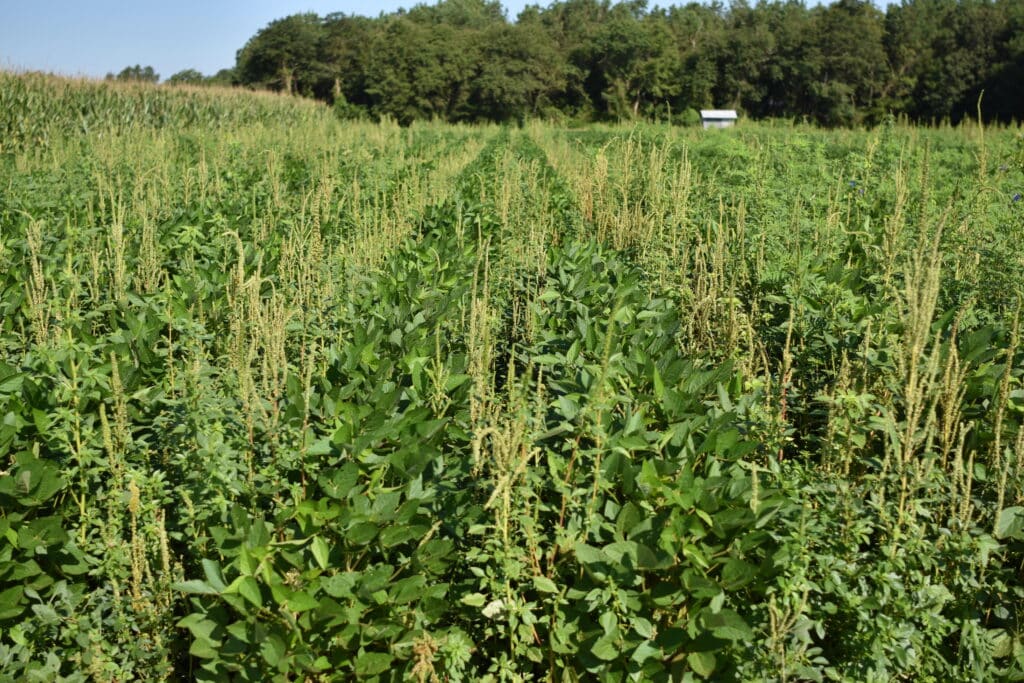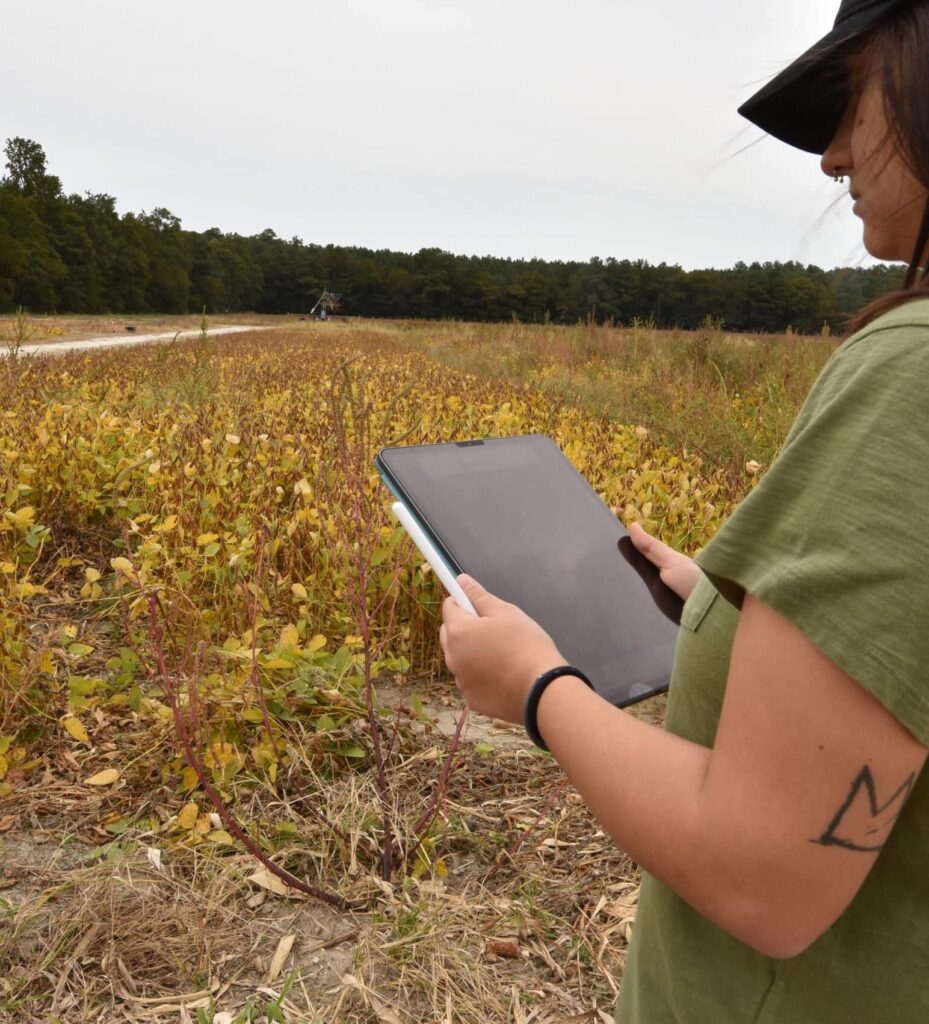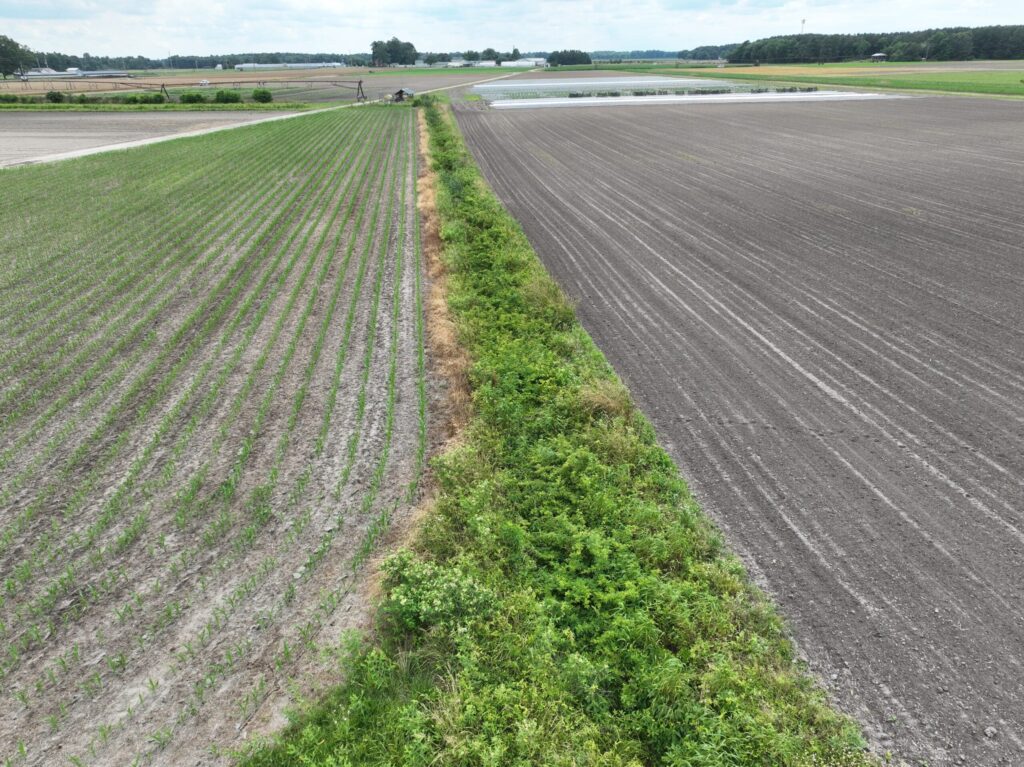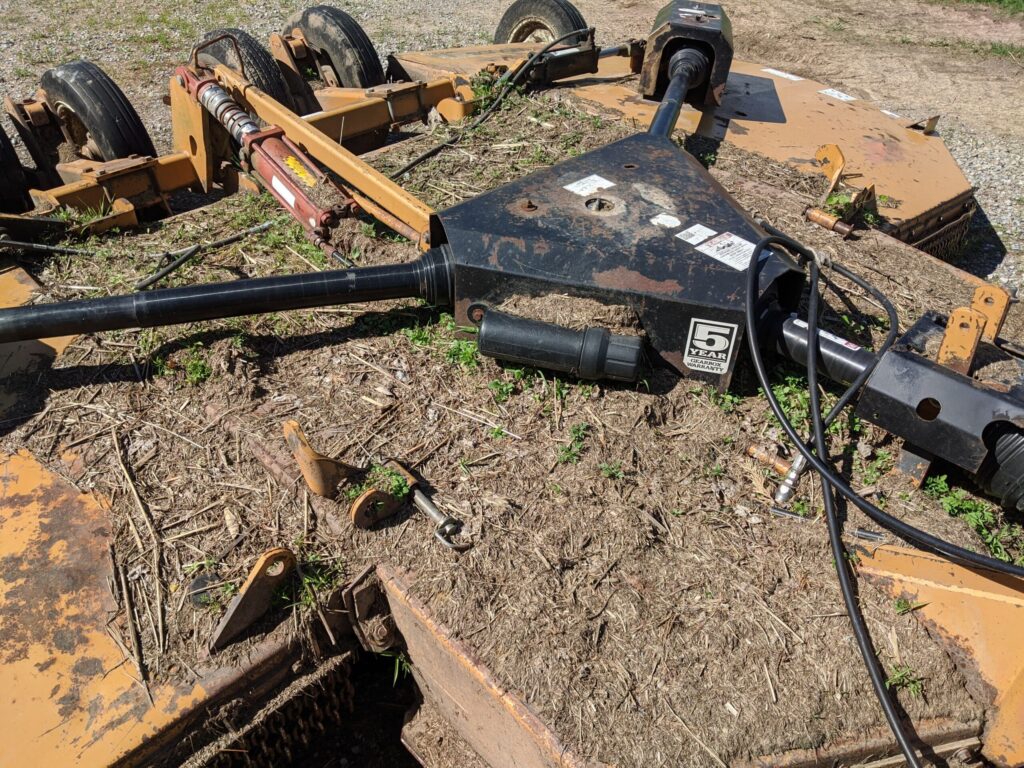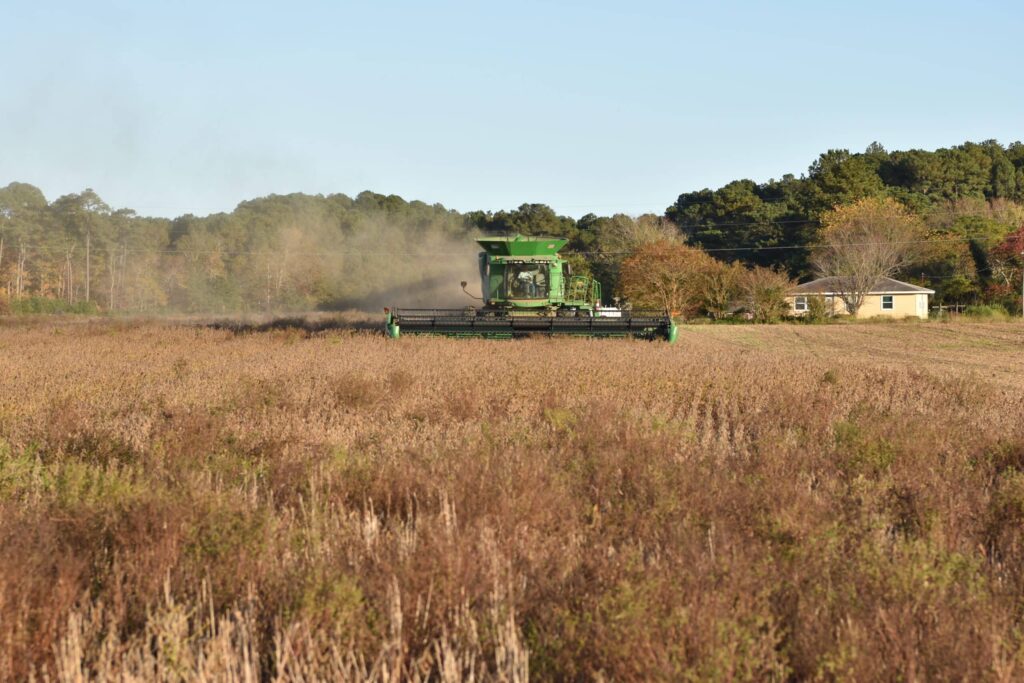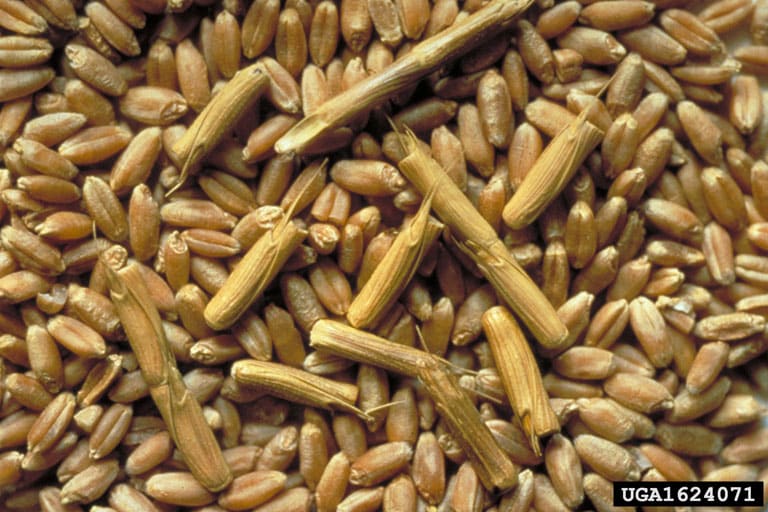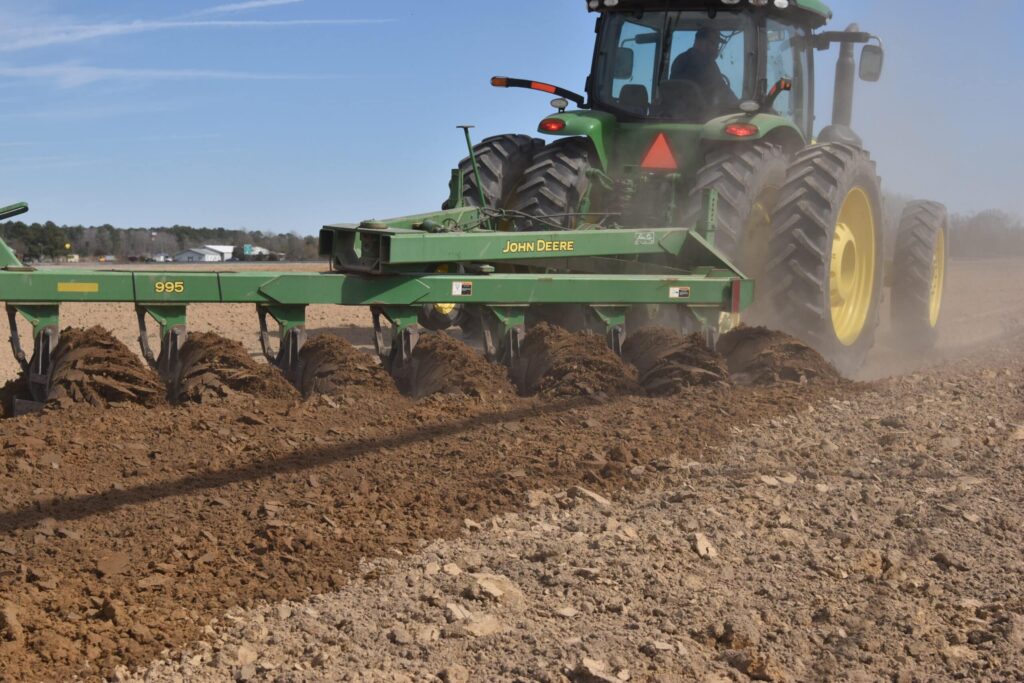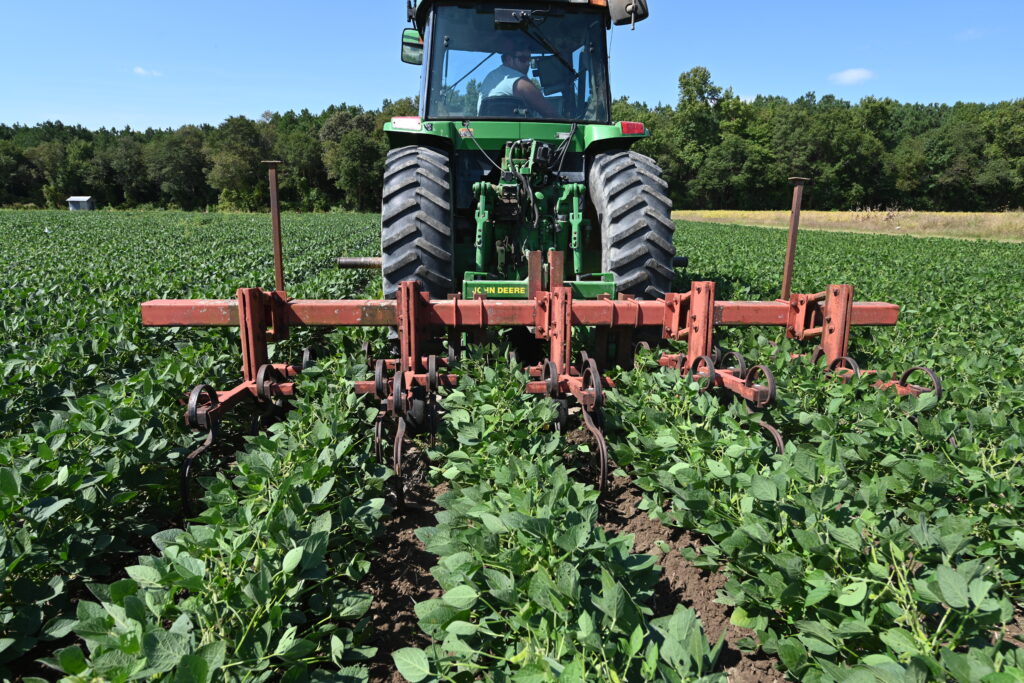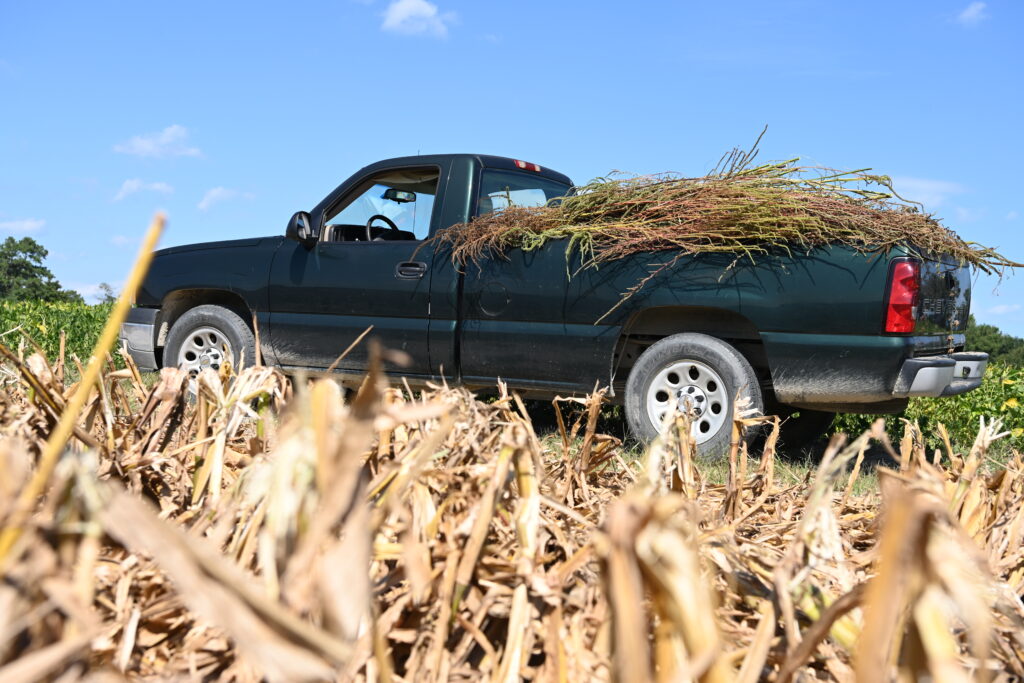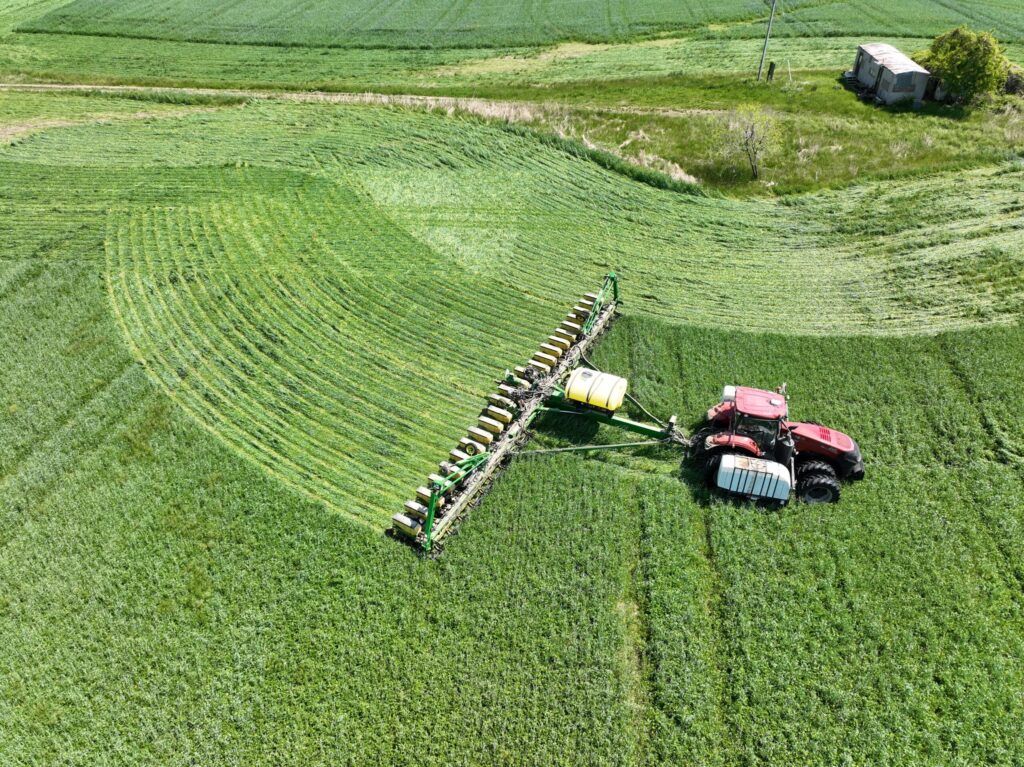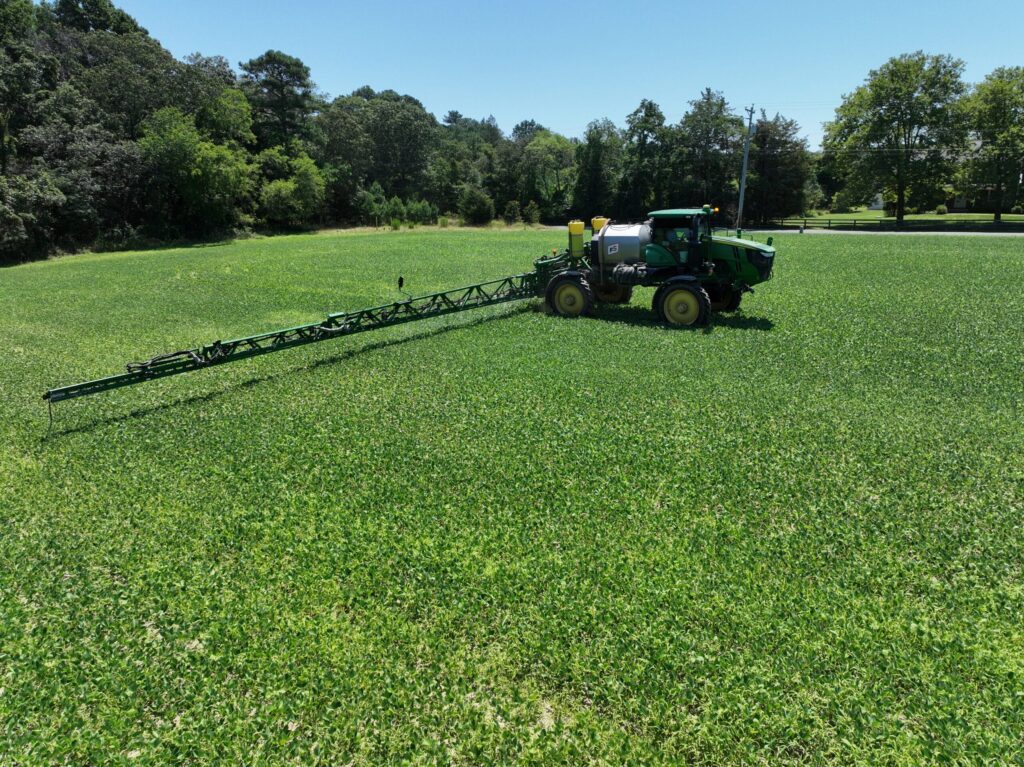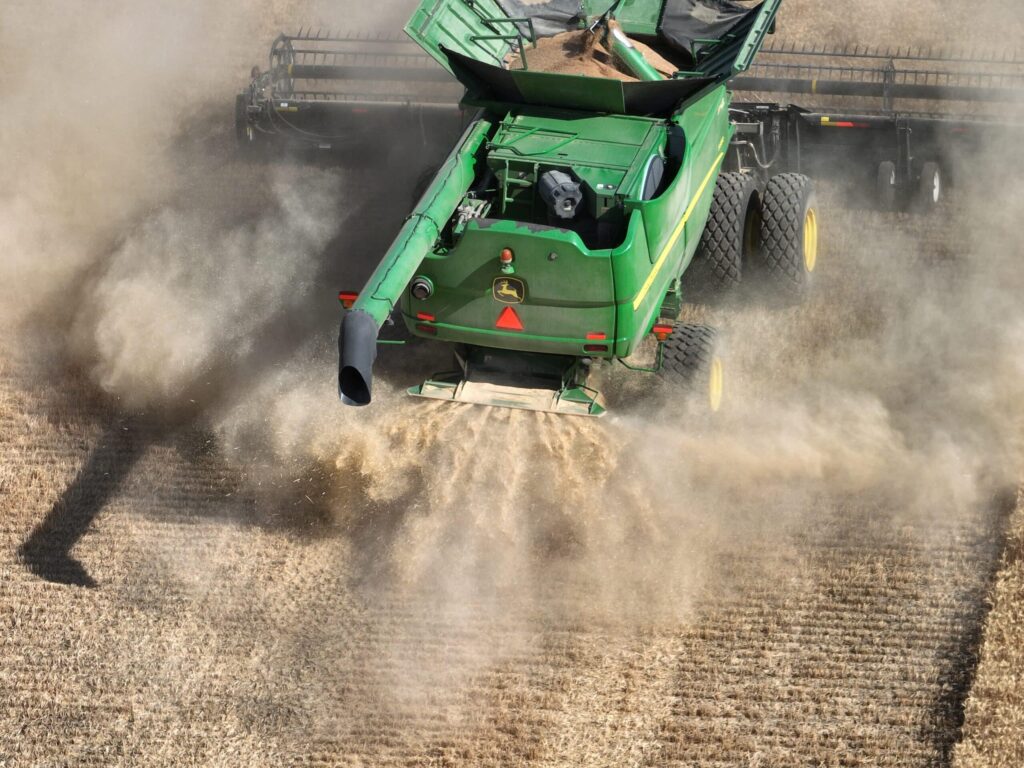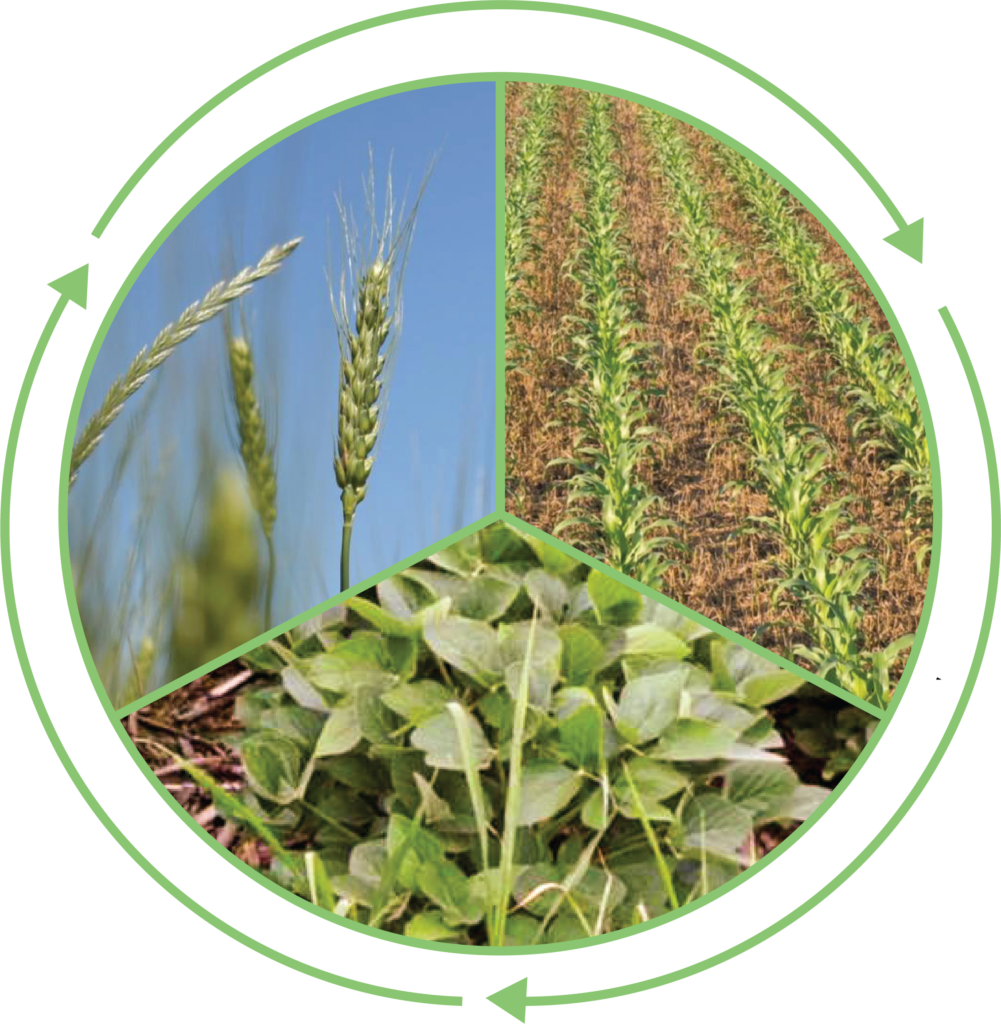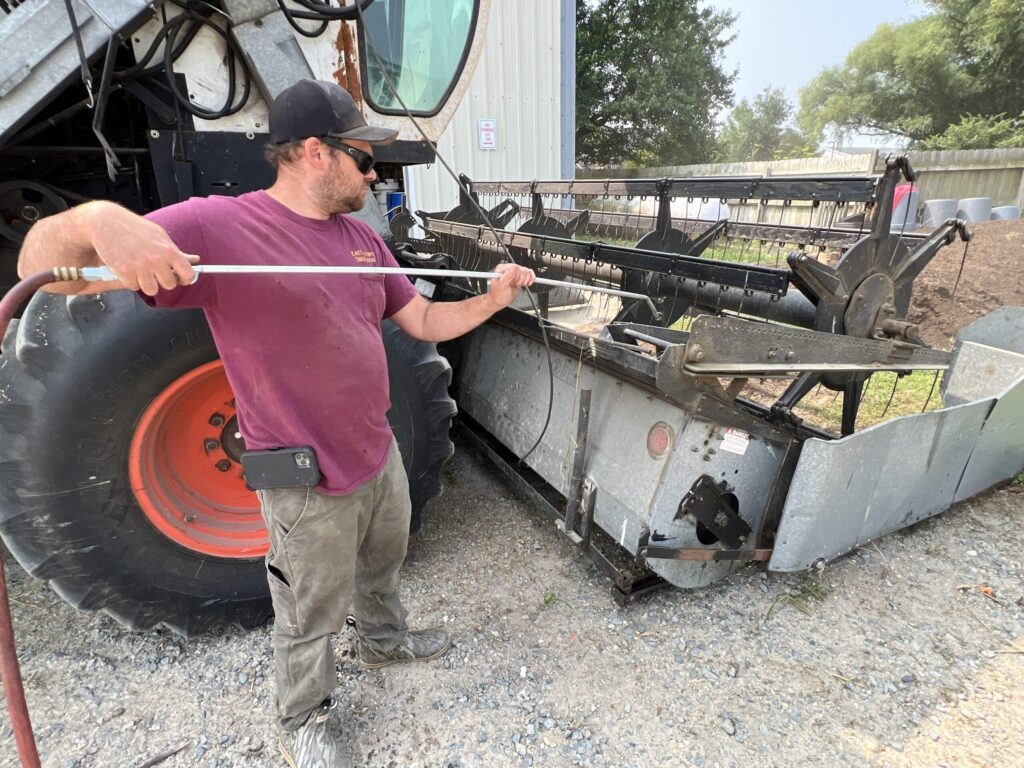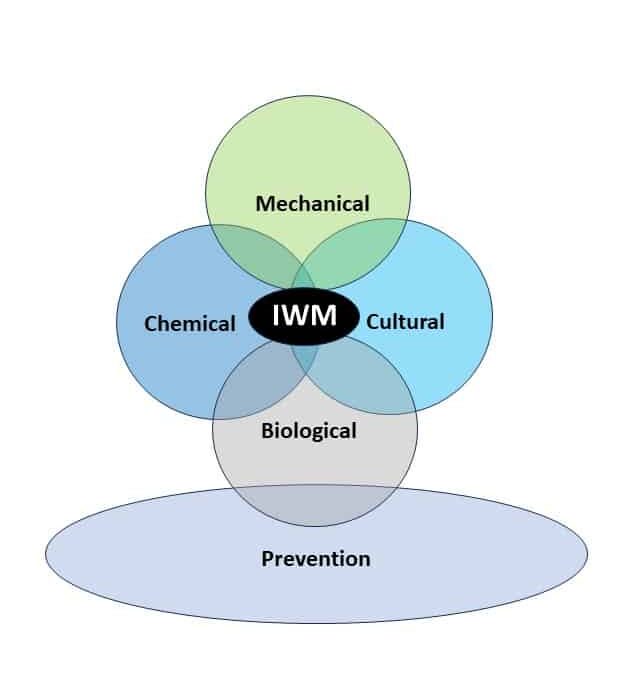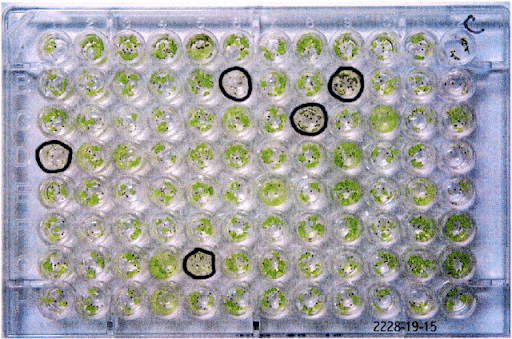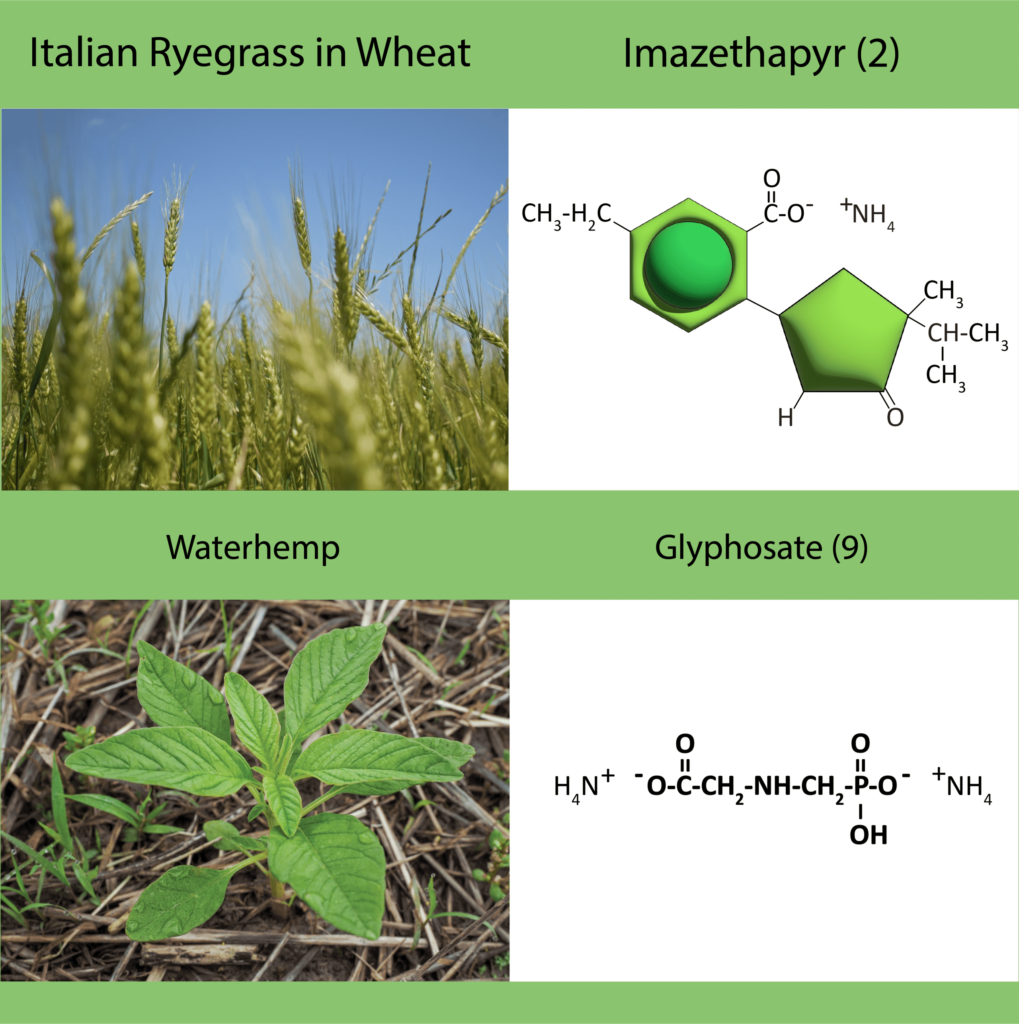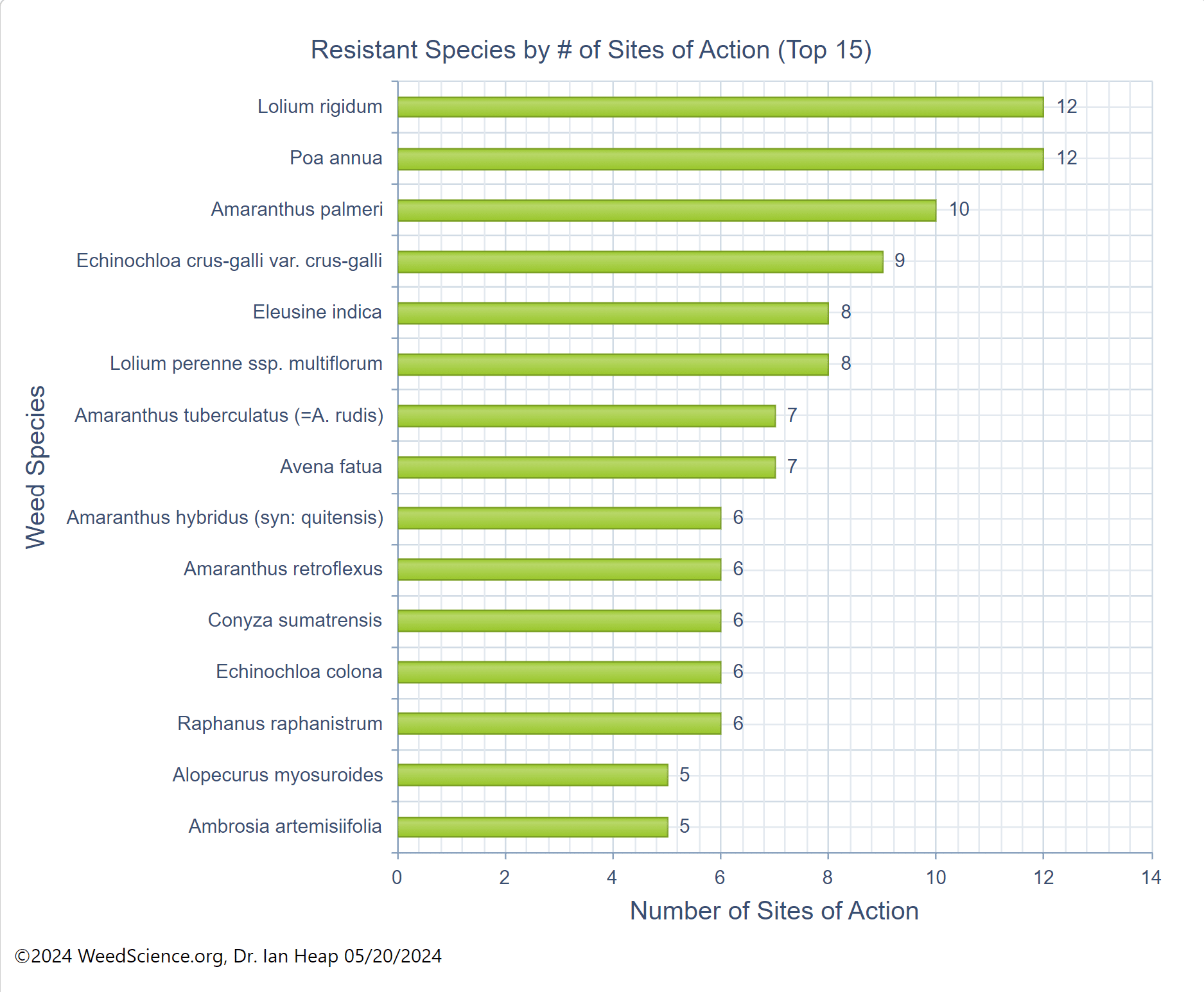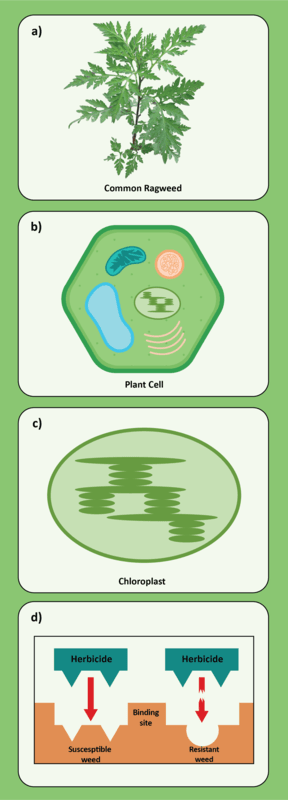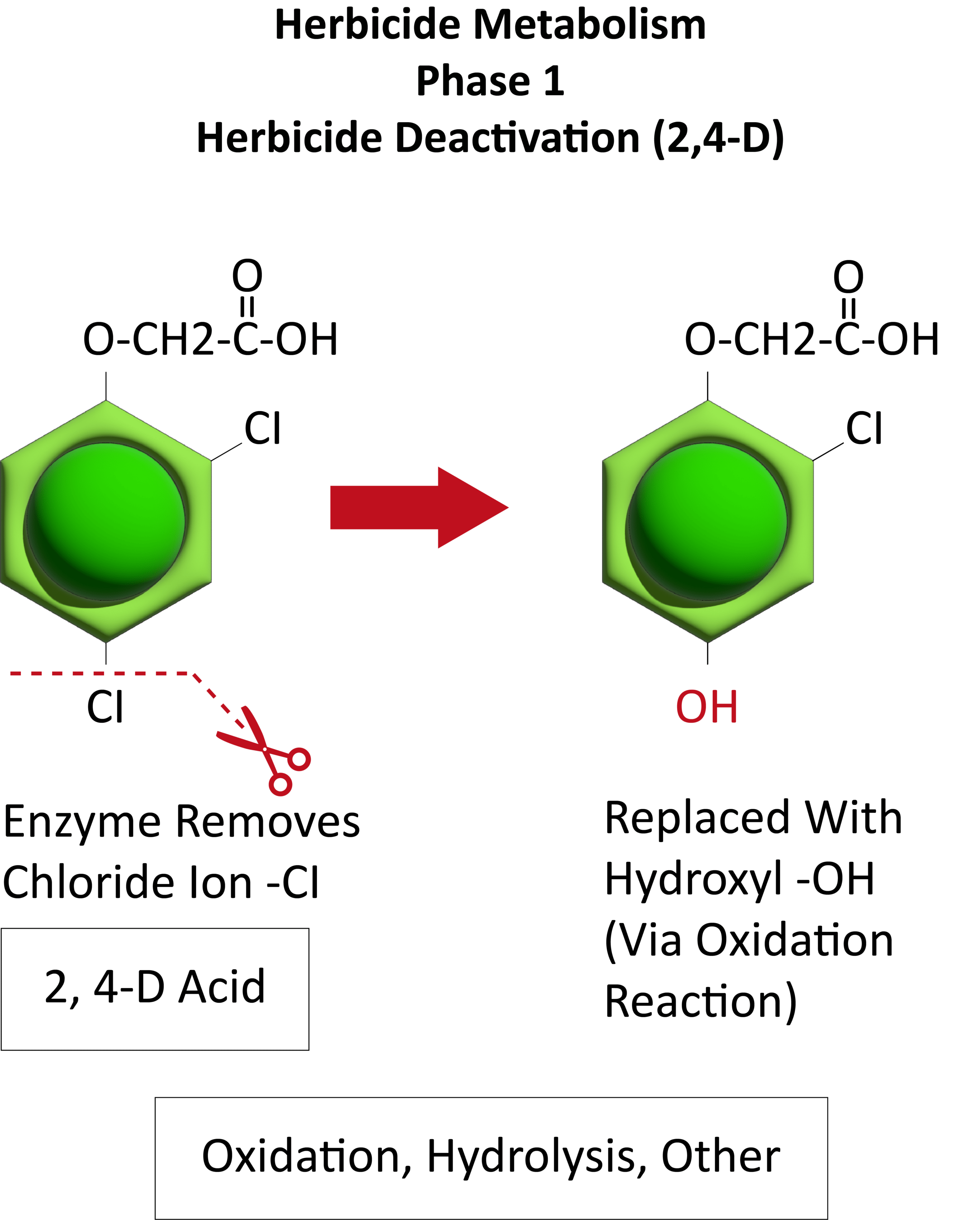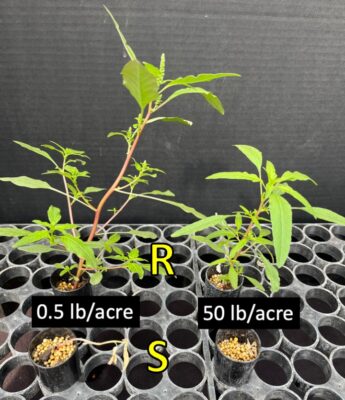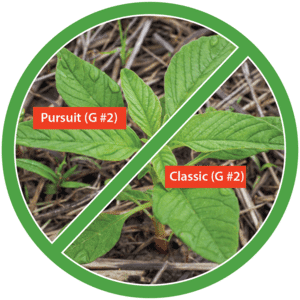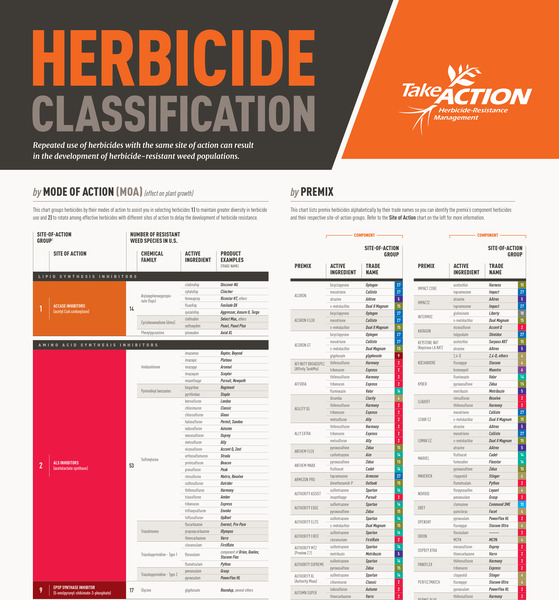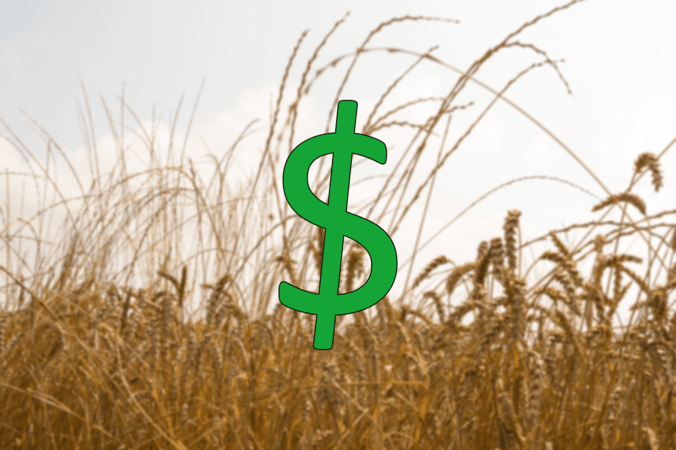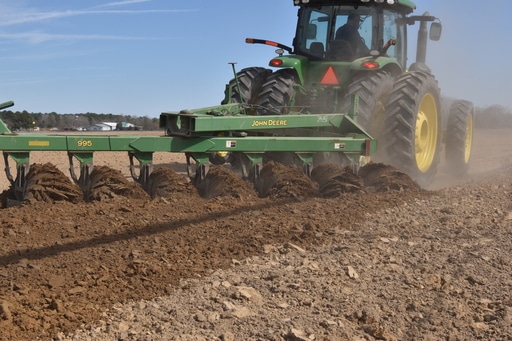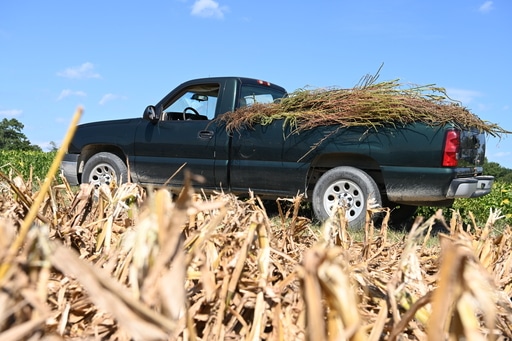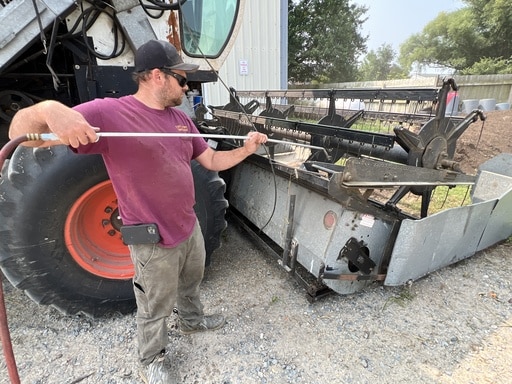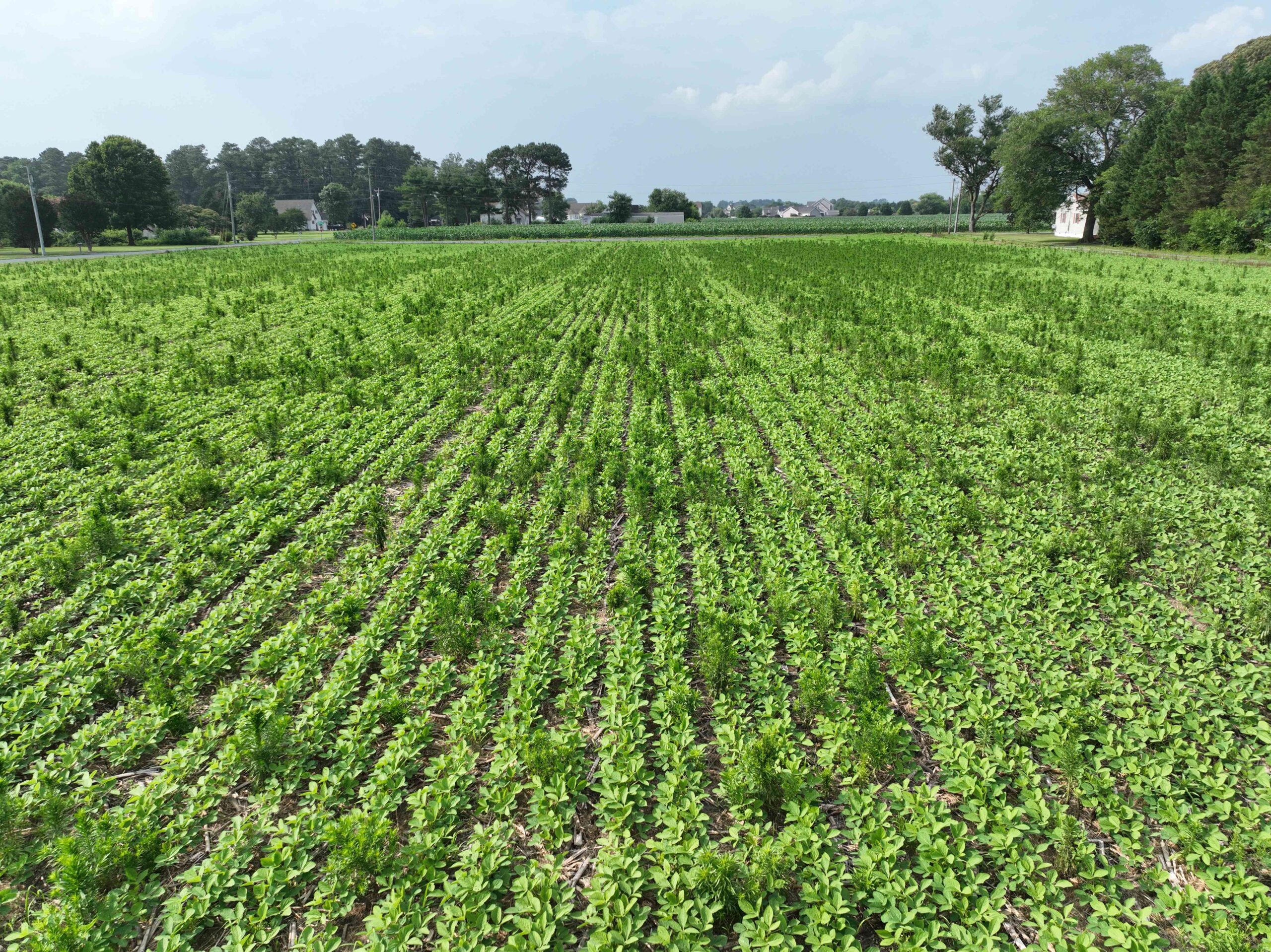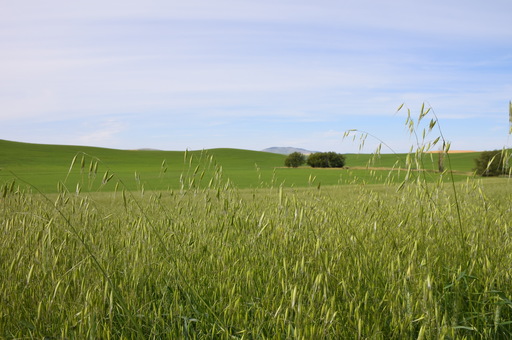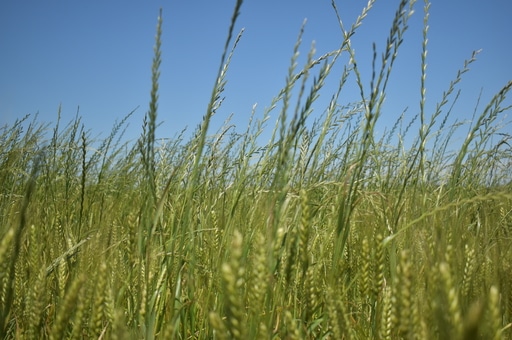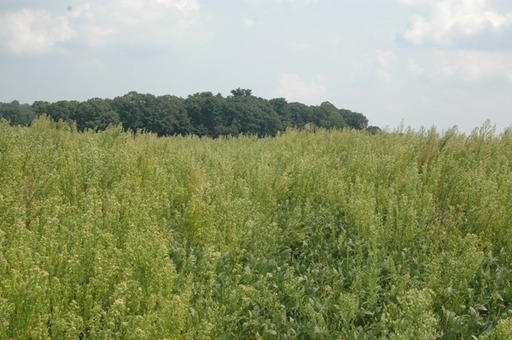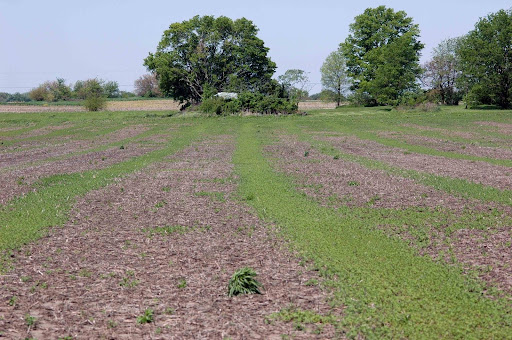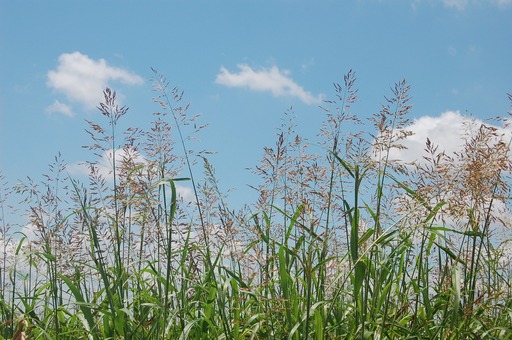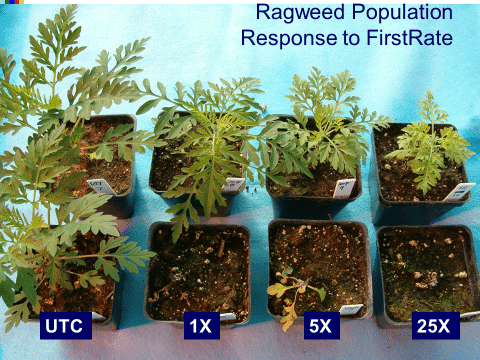Listen to this article above!
When is applying a postemergence herbicide too postemergent? Researchers at the University of Minnesota recently explored this question and uncovered the optimal herbicide timing and sequence to fight waterhemp and common lambsquarters in Enlist E3 soybeans.
They found that an early-postemergence herbicide at the V1 soybean growth stage (when the first trifoliate leaf is fully expanded) is necessary to control at least 80% of waterhemp. Weeds gained the upper hand and were 3 inches taller when researchers waited until the V3 growth stage to spray postemergence herbicides.

Unchecked weeds reduced soybean yield, plant height, and profit, according to this study by graduate studen Navjot Singh and weed scientist Dr. Debalin Sarangi. Their findings come from field experiments conducted for two years at two locations: the University of Minnesota’s Rosemount Research and Outreach Center’s waterhemp-infested trial plot and an on-farm trial in Franklin, Minnesota.
Herbicide Heroes
Enlist E3 soybeans give farmers the ability to use a variety of postemergent herbicides in their production, including glyphosate, glufosinate, and 2,4-D. These herbicides can be applied up to the R1 (beginning of bloom) or R2 (full bloom) growth stages (although application timing can be herbicide specific). Singh and Sarangi’s farmer-focused research was driven by two key questions: What is the optimal timing for postemergence herbicide applications, and in what sequence should they be applied?
Applying micro-encapsulated acetochlor preemergence controlled at least 85% of waterhemp and 52% of common lambsquarters at both study sites 21 days after application. Researchers anticipated that acetochlor’s micro-encapsulation would give this preemergence herbicide a longer lifetime and reduced damage to soybeans, Sarangi says.
One-pass (V1) and two-pass (V1 and V3) postemergence glufosinate applications provided 86% and 92% waterhemp control in the research station plots when preceded by a preemergent treatment. Without a preemergent herbicide, control dropped to 55% and 75% for the same treatments.
A 2,4-D and glyphosate postemergence program can combat common lambsquarters, researchers also found. All herbicide programs with 2,4-D and glyphosate achieved more than 92% control and were more effective than glufosinate-only programs (40% to 96% control). Researchers struggled to control common lambsquarters as it became more dense.
“If you have a common lambsquarters problem, it’s a good idea to add 2,4-D and glyphosate instead of relying entirely on glufosinate,” Singh says.

Yields & ROI
A preemergence and early-postemergence herbicide program provided benefits outside of weed control, as well. Singh found that soybeans were at least 3 inches taller and yields improved by at least 5 bushels per acre with early-postemergence treatments (an application at the V1 and V3 stage) versus delaying the applications with a late-postemergence application, in the research center plots.
Researchers achieved the greatest soybean yields using a program that included a preemergence herbicide, followed by an early-postemergence application of glufosinate, and a mid-postemergence application of 2,4-D and glyphosate—resulting in yields of 43.5 and 55.1 bushels per acre at the research station and on-farm plots, respectively. These yields were comparable to those from a two-pass glufosinate postemergence program, but Sarangi notes that using multiple modes of action is a better guard against herbicide resistance.
But just how pricey are those herbicide applications? Researchers found that having a preemergence herbicide improved economic returns by roughly $155 per acre at the university research plot, and both study locations had economic returns of at least $607 per acre with an early and mid-postemergence application. Delaying postemergence applications reduced the economic returns substantially. However, that analysis was done using a soybean price of $14.03/bushel – accurate for the 2021-22 timing of the study, but a far cry from today’s much lower soybean prices and outlook. Nonetheless, Sarangi also notes that skipping preemergence herbicide applications will ultimately always cost farmers yield, and as a result, money.
“Herbicide-resistance management is costly, and there was a time when a single postemergence glyphosate application could achieve adequate control,” Sarangi explains. “However, our results demonstrate that two postemergence applications consistently outperformed a single application for waterhemp control, yield, and economic returns.”
Best Bets for Beating Waterhemp and Common Lambsquarters
Sarangi and Singh’s bottom line? Farmers should always opt for a preemergence application and consider moving the timing of their postemergence herbicide program earlier to the V1 soybean growth stage to relieve waterhemp and common lambsquarters pressure. This herbicide program also improves Enlist E3 soybean yields and height. “There is no substitute for preemergence herbicides, and an early postemergence is important,” Sarangi says. “Whether you use 2,4-D or glufosinate, you have to use an early postemergence.”
Mid-to-late postemergence applications give weeds time to grow too large for effective control. Farmers can apply a mid-postemergence application if their weed pressure persists, but a late postemergence application won’t be as effective, Sarangi and Singh warn.
Farmers will also need to become more aggressive with their crop rotations, understanding their herbicide program’s modes of action and how to rotate them, tank mixing, and their weed management plans as waterhemp continues its path of herbicide resistance, Sarangi says. Fortunately, the findings from Sarangi and Singh’s research give farmers a playbook to start that aggressive defense against herbicide resistance in their Enlist E3 soybean production.
Visit GROW’s website for more information about integrated weed management, managing herbicide resistance, waterhemp, and common lambsquarters.
Article by Amy Sullivan, GROW; Header photo by Debalin Sarangi, University of Minnesota; Feature photo by University of Minnesota.
